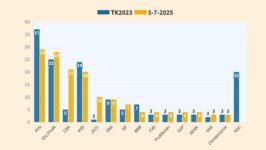As a result of how things are being reported, among other factors, a large proportion of Dutch citizens hugely overestimates their risk of getting infected. Based on a couple of simple assumptions, we calculate that of the next 8,500 people you will meet, 1 will infect you.
Preview:
The small chance of being infected with Covid-19 What always strikes me about the experts in the Dutch media is that they always follow the same pattern, "We don't know, but..." . And then there comes another sentence, in which the average viewer/listener has to think how great the risk is of be...







